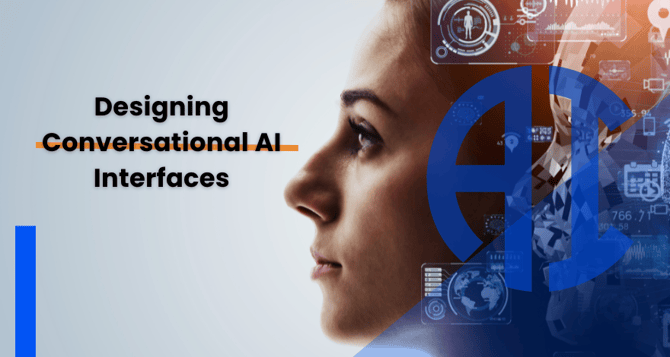Designing Conversational AI Interfaces with a Human-Centric Approach
By incorporating a human-centric approach, the design not only enhances usability but also fosters a connection between users and AI. This approach aims to create interfaces that understand and adapt to human needs, elevating the overall user satisfaction in the realm of conversational AI interactions.

In an era where technology plays an increasingly integral role in our daily lives, we must focus on making interactions with artificial intelligence as natural and user-friendly as possible.
Conversational AI interfaces have gained tremendous importance, and human-centered design is the key to ensuring that these interfaces provide an exceptional user experience. In this article, we'll explore the principles and technical implementations of human-centered design for conversational AI interfaces.
Understanding Human-Centered Design
Human-centered design, often abbreviated as HCD, is an approach to design that prioritizes the end user's needs, preferences, and behaviors. It aims to create products and systems that are not just functional but also intuitive, enjoyable, and user-friendly. When applied to ai conversation app interfaces, HCD focuses on making interactions feel like natural conversations, thus improving the user experience.
Principles of Human-Centered Design
1. User Empathy:
The core of HCD is empathy for the end user. Designers must thoroughly understand the needs, goals, and pain points of the people who will interact with the AI interface.
2. Iterative Design:
HCD is an iterative process. Designers should create, test, and refine designs in collaboration with users to continuously improve the interface.
3. Usability:
The interface should be easy to use, with clear navigation, consistent behavior, and intuitive commands. Users should feel confident when interacting with the AI.
4. Natural Conversations:
Conversational AI interfaces should mimic human interactions as closely as possible. This includes understanding natural language, tone, and context.
5. Feedback and Adaptation:
The interface should provide feedback to users, indicating that it understands their input and adapts to their needs. Continuous learning and improvement are essential.
Technical Implementations
1. Natural Language Processing (NLP):
NLP is the backbone of conversational AI. It allows the AI to understand and generate human language. Technical implementations of NLP include language models like GPT-3, which can analyze and respond to user input conversationally.
2. Speech Recognition:
For voice-based conversational AI, speech recognition technology is crucial. It converts spoken language into text, enabling the AI to understand and respond to voice commands. Services like Google's Speech-to-Text or Amazon Transcribe can be used for this purpose.
3. Contextual Understanding:
Building context awareness is vital. The AI should remember and refer back to previous parts of the conversation to maintain coherence. This can be achieved by maintaining conversation history and using techniques like dialogue management systems.
4. Multimodal Integration:
Integrating text, voice, and visuals in AI interactions offers a richer user experience. For instance, combining voice commands with on-screen information enhances usability. Amazon's Echo Show is an example of a multimodal conversational AI device.
5. User Profiling:
To make interactions more personalized, the AI can create user profiles based on past interactions and user-provided data. This can help in tailoring responses and recommendations.
6. A/B Testing:
Like any other design process, A/B testing is valuable. It involves testing different versions of the interface to see which one resonates best with users. For example, presenting options in a different order or using alternative phrasing for a prompt.
Examples
1. Virtual Assistants:
Virtual assistants like Siri, Google Assistant, and Alexa incorporate HCD principles. They use NLP, speech recognition, and context management to provide users with natural and helpful responses.
2. Customer Support Chatbots:
Many websites now deploy chatbots for customer support. These chatbots use NLP to understand user queries, and context management to keep track of the conversation. They can seamlessly switch between topics, providing user-centric support.
3. Educational Tutors:
AI-driven educational platforms, such as Duolingo, employ HCD principles to make learning engaging and personalized. They use NLP to provide explanations and exercises that adapt to the user's level and learning pace.
4. E-commerce Recommendations:
Amazon uses a recommendation engine that considers user profiles and past interactions to suggest products. This highly personalized approach results in increased user engagement and sales.
Conclusion
Human-centered design is the compass that guides the development of conversational AI interfaces. By putting the user at the center and using technologies like NLP, speech recognition, and context management, these interfaces can provide natural and engaging interactions.
From virtual assistants to educational platforms and customer support chatbots, the principles and technical implementations of HCD ensure that AI systems feel more like helpful companions rather than cold, automated entities.
Let's Embark on a Journey to AI Excellence Together
Our team is dedicated to building cutting-edge generative AI solutions that cater to your unique business requirements.
As AI technology continues to evolve, the focus on human-centered design becomes even more critical. It's not just about creating AI interfaces that work; it's about creating AI interfaces that work harmoniously with us, enhancing our daily lives and making our interactions with technology as seamless and natural as possible.


%201-1.webp?width=148&height=74&name=our%20work%20(2)%201-1.webp)


.png?width=344&height=101&name=Mask%20group%20(5).png)

















